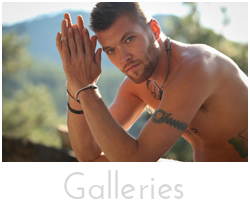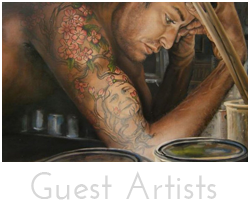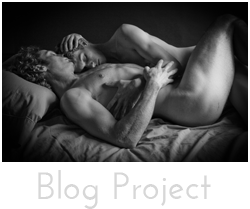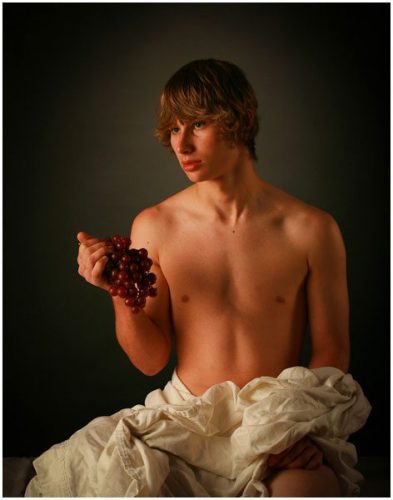 Now that I am getting out of my studio shell and have recently reconnected to the theatre world and meeting new people, I am beginning to discover a whole world of very talented young photographers and film makers in my community. There is a whole community here that I didn’t even know existed. How is it that we can become so lost or disassociated from what is happening around us? Again thanks to the Internet and You Tube and Facebook my circle of friends continues to grow and I am seeing some truly remarkable work and images. In many ways I am beginning to feel I have grown a bit outdated and behind the times. Everything modern seems to rely heavily on the post-production process. Add in elements that completely refine the final quality of the finished work. I see the images of a young 22-year old photographer who has emulated the extraordinary talents of master photographer that have taken years to cultivate and develop. It was always my dream to go to film school and become a cinematographer, but back in my time, the only option was expensive film schools in California. Now everyone seems to have a camera and digital editing station on their laptops. The way they can express their ideas or explore concepts is remarkable, seeming in a matter of moments. I have dabbled in the realm of cinematography and have worked on several student productions and loved the process. I think there is still great insight to be gained with quality lighting design and it becomes crucial to create the mood and tone and look of the final image. Many of these films I am watching seem to be weak in the over all creation of lighting and shooting of the images sequence. Though the writing and story telling of the narrative is very good, it’s the overall structure of the technical aspects that tend to become muddled and lost. You can use all the digital effects in the world to make the image interesting, but it still needs to start with a brilliant, well executed concept from the start. In all actuality lighting is far simpler than you would imagine and does not take too much equipment to really pull it off. The simple key is little light, and a variety of filters and reflectors to gently place the tone where they will have the most psychological impact. My excitement grows looking at this ambitions works of these young kids and I think somehow I would like to connect with the quality of this process. It would be fun to work on some lighting projects with them just to nudge the learning curve along a bit. Their enthusiasm is becoming infectious within my own body of work and imagery. We all must build a creative collective and begin to feed each other. As an older guy I have the experience and wisdom to offer and resources to make things happen. Somehow it seems life is reversed now. When I was at that age I didn’t have the tools or resources and I was carried away by the spark and wonder of creation. Through the years, that spark begins to fade as we become tainted by the seeming roadblocks we encounter to get to our destination. Many of us creative artists giving up along the way. Our focus begins to narrow and draws internal. But that spark for me glows anew seeing it ablaze in the youth I am beginning to connect with. It is time in my life to reach out and become a part of something greater then myself.
Now that I am getting out of my studio shell and have recently reconnected to the theatre world and meeting new people, I am beginning to discover a whole world of very talented young photographers and film makers in my community. There is a whole community here that I didn’t even know existed. How is it that we can become so lost or disassociated from what is happening around us? Again thanks to the Internet and You Tube and Facebook my circle of friends continues to grow and I am seeing some truly remarkable work and images. In many ways I am beginning to feel I have grown a bit outdated and behind the times. Everything modern seems to rely heavily on the post-production process. Add in elements that completely refine the final quality of the finished work. I see the images of a young 22-year old photographer who has emulated the extraordinary talents of master photographer that have taken years to cultivate and develop. It was always my dream to go to film school and become a cinematographer, but back in my time, the only option was expensive film schools in California. Now everyone seems to have a camera and digital editing station on their laptops. The way they can express their ideas or explore concepts is remarkable, seeming in a matter of moments. I have dabbled in the realm of cinematography and have worked on several student productions and loved the process. I think there is still great insight to be gained with quality lighting design and it becomes crucial to create the mood and tone and look of the final image. Many of these films I am watching seem to be weak in the over all creation of lighting and shooting of the images sequence. Though the writing and story telling of the narrative is very good, it’s the overall structure of the technical aspects that tend to become muddled and lost. You can use all the digital effects in the world to make the image interesting, but it still needs to start with a brilliant, well executed concept from the start. In all actuality lighting is far simpler than you would imagine and does not take too much equipment to really pull it off. The simple key is little light, and a variety of filters and reflectors to gently place the tone where they will have the most psychological impact. My excitement grows looking at this ambitions works of these young kids and I think somehow I would like to connect with the quality of this process. It would be fun to work on some lighting projects with them just to nudge the learning curve along a bit. Their enthusiasm is becoming infectious within my own body of work and imagery. We all must build a creative collective and begin to feed each other. As an older guy I have the experience and wisdom to offer and resources to make things happen. Somehow it seems life is reversed now. When I was at that age I didn’t have the tools or resources and I was carried away by the spark and wonder of creation. Through the years, that spark begins to fade as we become tainted by the seeming roadblocks we encounter to get to our destination. Many of us creative artists giving up along the way. Our focus begins to narrow and draws internal. But that spark for me glows anew seeing it ablaze in the youth I am beginning to connect with. It is time in my life to reach out and become a part of something greater then myself.
Category Archives: Uncategorized
Shutter Speed
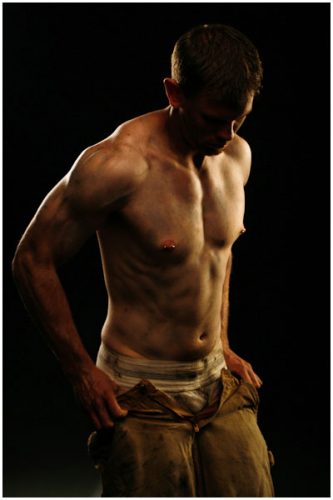 The shutter speed is how quickly the image is exposed. I began to allude to it a bit yesterday when I was talking about photographing dance. This is a part on my series of how the camera operates since we have so many people following this that are trying to get away from using their camera’s just set on automatic. The two elements that control the exposure are the aperture on the lens, which controls depth of field in the image, (the front to back distance in an image that is in focus). The second element is the shutter speed. I am rarely conscience of shutter speed when I shoot so will give you my brief take on how it works. Many cameras you can set to a shutter priority mode that will adjust the aperture to create a decent exposure. Shutter is only concerned with speed. How quickly the exposure can be taken. Typically you want to freeze an athlete in motion or a dancer in movement or a humming bird in flight. The faster the shutter speed, the more you will become successful at stopping the motion. They are typically represented by 1/1000 or 1/15, which identifies the tenths of a second. Of course the high the number the 1/1000 the faster it becomes, the lower the number the slower it moves. The way the camera works is there is a plate called a shutter that covers the exposure plane (or surface that will be exposed) with in the camera. The typical rule of exposure to get hand held stability is take the length of the lens, say 200mm, add a 1 over it 1/200 and you should never shoot any speed below this number. I typically go a step above it above that 1/250 to be safe. I am not particularly fond of using a tripod and love the idea of the spontaneity of moving around with my subjects so I always try to hand hold. In dark theater situations I typically will use a monopod to rest the camera on and maintain a little more stability; but then again I am shooting in light that often does not allow me to shoot that fast. For the most part, my style of photography mostly concerns depth of field so I rarely ever even pay attention the speed. I know that you all have seen those amazing images where the water of a stream looks like glass, well that is the opposite effect. In that case the shutter is slowed down to create an extended exposure, often up to a minute. I do not find that exposure actually contributes too much to artistic choice in creating images but in the instance of water it does create some very remarkable landscapes. Have you ever wondered how they can shoot an image of the golden gate bridge without any cars on it? It’s kind of the same principles where you use a series of neutral density filters, (that block out the light) and shoot with a very prolonged exposure. Well that’s the way it used to work. Now a days we just erase it and clean it up with some program like Adobe Photoshop. In a sense the modern software is taking the creative process of photography out of photography and making it more of a graphic experience, but that’s the subject for another blog.
The shutter speed is how quickly the image is exposed. I began to allude to it a bit yesterday when I was talking about photographing dance. This is a part on my series of how the camera operates since we have so many people following this that are trying to get away from using their camera’s just set on automatic. The two elements that control the exposure are the aperture on the lens, which controls depth of field in the image, (the front to back distance in an image that is in focus). The second element is the shutter speed. I am rarely conscience of shutter speed when I shoot so will give you my brief take on how it works. Many cameras you can set to a shutter priority mode that will adjust the aperture to create a decent exposure. Shutter is only concerned with speed. How quickly the exposure can be taken. Typically you want to freeze an athlete in motion or a dancer in movement or a humming bird in flight. The faster the shutter speed, the more you will become successful at stopping the motion. They are typically represented by 1/1000 or 1/15, which identifies the tenths of a second. Of course the high the number the 1/1000 the faster it becomes, the lower the number the slower it moves. The way the camera works is there is a plate called a shutter that covers the exposure plane (or surface that will be exposed) with in the camera. The typical rule of exposure to get hand held stability is take the length of the lens, say 200mm, add a 1 over it 1/200 and you should never shoot any speed below this number. I typically go a step above it above that 1/250 to be safe. I am not particularly fond of using a tripod and love the idea of the spontaneity of moving around with my subjects so I always try to hand hold. In dark theater situations I typically will use a monopod to rest the camera on and maintain a little more stability; but then again I am shooting in light that often does not allow me to shoot that fast. For the most part, my style of photography mostly concerns depth of field so I rarely ever even pay attention the speed. I know that you all have seen those amazing images where the water of a stream looks like glass, well that is the opposite effect. In that case the shutter is slowed down to create an extended exposure, often up to a minute. I do not find that exposure actually contributes too much to artistic choice in creating images but in the instance of water it does create some very remarkable landscapes. Have you ever wondered how they can shoot an image of the golden gate bridge without any cars on it? It’s kind of the same principles where you use a series of neutral density filters, (that block out the light) and shoot with a very prolonged exposure. Well that’s the way it used to work. Now a days we just erase it and clean it up with some program like Adobe Photoshop. In a sense the modern software is taking the creative process of photography out of photography and making it more of a graphic experience, but that’s the subject for another blog.
Dance, Dance, Dance
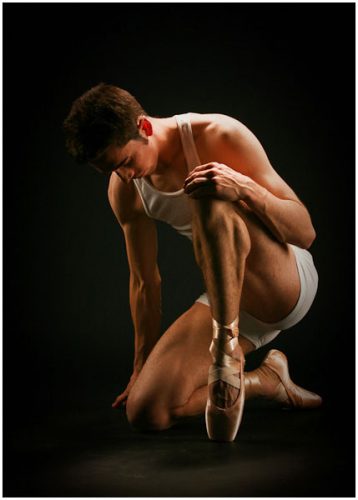 I have been working through 16GB of dance images the last couple of days. One of my contracts is with the University of Montana to photograph their Drama/Dance School productions. And dance is certainly the biggest event of the season. Typically after the show we have a photo call and create archive images of the production to be used as promotional materials for the University. But most of all, for portfolio reviews of the students that create these shows. This year the department happens to have the final play of the season Fuddy Meers and eight dance pieces all going on the same week. I spent three nights last week shooting these images. Since the semester is trying to wrap up and the students do their final portfolio reviews for the school year, there is always a rush this time of year to get the images back to them. Then going out of town last weekend with Bill’s show, it’s been a mad dash the past 24 hours to get all these images done and turned in this morning.
I have been working through 16GB of dance images the last couple of days. One of my contracts is with the University of Montana to photograph their Drama/Dance School productions. And dance is certainly the biggest event of the season. Typically after the show we have a photo call and create archive images of the production to be used as promotional materials for the University. But most of all, for portfolio reviews of the students that create these shows. This year the department happens to have the final play of the season Fuddy Meers and eight dance pieces all going on the same week. I spent three nights last week shooting these images. Since the semester is trying to wrap up and the students do their final portfolio reviews for the school year, there is always a rush this time of year to get the images back to them. Then going out of town last weekend with Bill’s show, it’s been a mad dash the past 24 hours to get all these images done and turned in this morning.
I began shooting theater and dance from the beginning of my career in photography. A teacher told me when I began photography to shoot what you know; this is certainly what I know and I love it. I think it’s something that I am particularly good at. Typically when I go into one of these types of shoots I am able to direct the action and scene to get the most action out of the images. The job is to tell a story with each image and get to the core of what that action entails. Often times the directors will choose scenes that are the emotional climax of the play, which do not necessarily make very interesting images. What creates great images is movement, gesture, expression, and showing the positional relationship between the actors.
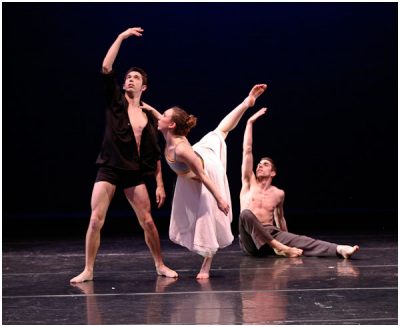 Dance is one of the hardest subjects to capture and seems to take a lot more time and a quick impulse. I used to go out to photograph sporting events, especially wrestling, to practice on seeing and responding to the moments as they arise. In a sense wrestling has a very dance like quality of movement and composition, thought most wrestlers will probably disagree. When I approach sports it’s purely from a artistic point of view. When I first began shooting dance I used film, which was sometimes near impossible. It seems that the lighting designers here at this university design their dance pieces to be in near darkness, and then the dancers typically wear dark clothing or blacks, with rapid movement. Photographically this is very difficult to capture. Back then you had to rely on film speed which was 400 ISO, which you could push to 800, but would sacrifice quality. There was generally only about a 4 stop latitude the chrome films could capture, so you were having to choose which end of the darks or whites you would compromise. Plus film was very expensive and about half the images were no good. Nowadays digital has made this line of work a breeze. As long as you have a high enough grade camera that can respond to your impulse shooting in dark places. This is where the shutter speed comes into play in the exposure ratio that has been the on going discussion of these blogs. You must be totally concerned that you are shooting no less then 1/200 to capture dance in motion, and still sometimes that even becomes iffy. The stop range latitude has greatly expanded for what digital can capture and I can typically shoot many events live as they unfold on a monopod hand held from the house. But when you get great dance images, they are truly beautiful. I have been shooting these types of images for over a decade now and love this type of work. In fact I probably have about 2 to 1 live entertainment images over all other images in my catalogs. In fact I have a separate hard drive devoted just to maintaining this archive. Dance also seems to require a lot more post processing and cropping to refine my own sense of balance in the image because it’s in constant motion when you shoot. Besides, it puts me back into the theater space where I feel comfortable and belong. I still feel at home in that world clicking away in the dark.
Dance is one of the hardest subjects to capture and seems to take a lot more time and a quick impulse. I used to go out to photograph sporting events, especially wrestling, to practice on seeing and responding to the moments as they arise. In a sense wrestling has a very dance like quality of movement and composition, thought most wrestlers will probably disagree. When I approach sports it’s purely from a artistic point of view. When I first began shooting dance I used film, which was sometimes near impossible. It seems that the lighting designers here at this university design their dance pieces to be in near darkness, and then the dancers typically wear dark clothing or blacks, with rapid movement. Photographically this is very difficult to capture. Back then you had to rely on film speed which was 400 ISO, which you could push to 800, but would sacrifice quality. There was generally only about a 4 stop latitude the chrome films could capture, so you were having to choose which end of the darks or whites you would compromise. Plus film was very expensive and about half the images were no good. Nowadays digital has made this line of work a breeze. As long as you have a high enough grade camera that can respond to your impulse shooting in dark places. This is where the shutter speed comes into play in the exposure ratio that has been the on going discussion of these blogs. You must be totally concerned that you are shooting no less then 1/200 to capture dance in motion, and still sometimes that even becomes iffy. The stop range latitude has greatly expanded for what digital can capture and I can typically shoot many events live as they unfold on a monopod hand held from the house. But when you get great dance images, they are truly beautiful. I have been shooting these types of images for over a decade now and love this type of work. In fact I probably have about 2 to 1 live entertainment images over all other images in my catalogs. In fact I have a separate hard drive devoted just to maintaining this archive. Dance also seems to require a lot more post processing and cropping to refine my own sense of balance in the image because it’s in constant motion when you shoot. Besides, it puts me back into the theater space where I feel comfortable and belong. I still feel at home in that world clicking away in the dark.
A Common Global Community
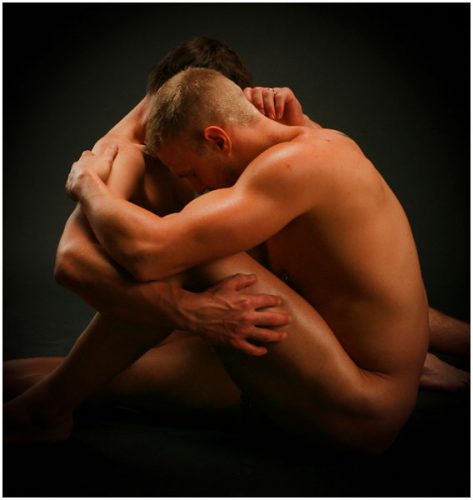 Wow we are into May already. I feel like my life has been a whirlwind of activity for the past month and this morning I am finally getting to stop for a moment and catch up with myself. I have now managed to post this blog and images for 1/3 of the year. And hopefully it has been interesting to all those still following. This mean I still have 2/3 of the year to go. I have hit over 20,000 visitors to the site at this point, and to me that is still a bit mind-boggling. I see my self changing a great deal since this project began and still have no idea where it will end up by year’s end. In many ways I am discovering a peaceful center to myself and over all feel more confident and comfortable inside my own skin. Thanks to all the fascinating people who have responded to me along this voyage. I am sorry that I have lost track with some and am not great at keeping up the communication. I wish I had a year off just to get out and meet all the remarkable people I have been getting to know. In many ways I feel like I have developed some very strong friendships and created relationships with people I have never met. Some of them, more so, than the people that I have met. There is something about being online that you can be more open or candid. You are able to quickly get to the core of who they are? It is an odd era we live in to have such lighting fast communication across the globe. As a child I remember thinking how distant everything was. There was a certain amount of distrust of the world and fear of the unknown prevailed. War seemed inevitable and there was a threat of global inhalation. I remember thinking as a child that the world we knew could end anytime then. Growing up in the 60’s was filled with turmoil and doubt. Leaders were being assassinated, horrific crimes committed. The Charles Manson rampage made me cower with fear even in my small basement bedroom in Montana. Would I become the victim of random violence? It seems that my dream as a child were always of horrific acts of violence or mass nuclear decimation. It’s so weird to think back to what entered the psyche of a pre-pubescent boy of that age. I somehow never dreamed I’d survive to this age so many years later. Since I have been out in the world and have been witness to its evolution, I now feel harmony and security without bodily threat. Now our insecurities lie in global economic threat. The infrastructure growing so large that it seems we are losing or quickly will lose our way to sustain it. The fears that now inhabit our psyches is that we will lose all we have worked for, because we can no longer afford it and end up in a tent city somewhere, homeless. I was watching a show last night “Inside Job” where that is the reality for many. The advent of television and internet has brought us such a long way in facing our fears and anxieties. It has allowed me to break the isolation I felt as a gay artist aspiring to find meaning in the context of my nude photography and be accepted for who and what I have become. This project day by day seems to bring me closer to the truth of who I have been and what I will become. I entered this project on the verge of despair and 4 months later feel elation. My fears, doubts, and anxieties dissipating because I know I am not alone on this journey. It is good to find a common community globally.
Wow we are into May already. I feel like my life has been a whirlwind of activity for the past month and this morning I am finally getting to stop for a moment and catch up with myself. I have now managed to post this blog and images for 1/3 of the year. And hopefully it has been interesting to all those still following. This mean I still have 2/3 of the year to go. I have hit over 20,000 visitors to the site at this point, and to me that is still a bit mind-boggling. I see my self changing a great deal since this project began and still have no idea where it will end up by year’s end. In many ways I am discovering a peaceful center to myself and over all feel more confident and comfortable inside my own skin. Thanks to all the fascinating people who have responded to me along this voyage. I am sorry that I have lost track with some and am not great at keeping up the communication. I wish I had a year off just to get out and meet all the remarkable people I have been getting to know. In many ways I feel like I have developed some very strong friendships and created relationships with people I have never met. Some of them, more so, than the people that I have met. There is something about being online that you can be more open or candid. You are able to quickly get to the core of who they are? It is an odd era we live in to have such lighting fast communication across the globe. As a child I remember thinking how distant everything was. There was a certain amount of distrust of the world and fear of the unknown prevailed. War seemed inevitable and there was a threat of global inhalation. I remember thinking as a child that the world we knew could end anytime then. Growing up in the 60’s was filled with turmoil and doubt. Leaders were being assassinated, horrific crimes committed. The Charles Manson rampage made me cower with fear even in my small basement bedroom in Montana. Would I become the victim of random violence? It seems that my dream as a child were always of horrific acts of violence or mass nuclear decimation. It’s so weird to think back to what entered the psyche of a pre-pubescent boy of that age. I somehow never dreamed I’d survive to this age so many years later. Since I have been out in the world and have been witness to its evolution, I now feel harmony and security without bodily threat. Now our insecurities lie in global economic threat. The infrastructure growing so large that it seems we are losing or quickly will lose our way to sustain it. The fears that now inhabit our psyches is that we will lose all we have worked for, because we can no longer afford it and end up in a tent city somewhere, homeless. I was watching a show last night “Inside Job” where that is the reality for many. The advent of television and internet has brought us such a long way in facing our fears and anxieties. It has allowed me to break the isolation I felt as a gay artist aspiring to find meaning in the context of my nude photography and be accepted for who and what I have become. This project day by day seems to bring me closer to the truth of who I have been and what I will become. I entered this project on the verge of despair and 4 months later feel elation. My fears, doubts, and anxieties dissipating because I know I am not alone on this journey. It is good to find a common community globally.
Naked Versus Nude
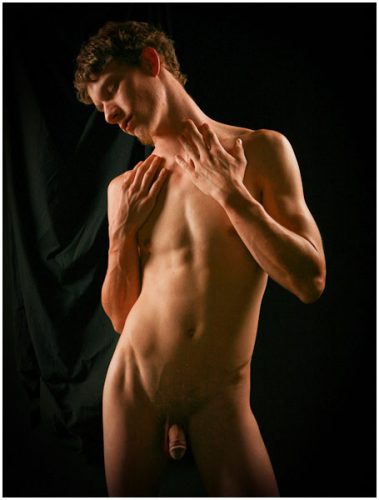 Does being naked become more erotic than being nude?
Does being naked become more erotic than being nude?
Yesterday as we were driving back from the gig at the Sun Meadow Nudist Resort I began to wonder: Is there a difference between being naked vs. being nude? Which is the more appropriate given the situation we were in? As I was writing yesterday’s blog I referred to being naked up to the point where I become comfortable with it and accepted the situation. I entered the room unclothed then, in my head, somehow switched to nude. It was sort of a subconscious choice that came to me at the time and I was not quite sure why. So this morning I began to delve into it a bit more.
When I began this project I chose to call it The Naked Man Project because it was meant to be about a man who photographs people naked to create nude photography. But more importantly, is was to contain a blog about me exposing my inner thoughts, feelings, concepts, and ideas making my inner self-naked for all to examine. If it had only focused on my images I probably would have called it The Nude Man Project. But that just doesn’t quite have the bite to it and somehow seems less appealing taking on more of a passive tone. In the dictionary the word “nude” seems to have less connotation of exposure as an adjective and refers to is it more as a noun or subject: “wearing no clothes; naked: a painting of a nude model a naked human figure, typically as the subject of a painting, sculpture, or photograph; the representation of the naked human figure as a genre in art.” While the word “naked” seems to deal with it as an adjective dealing with exposure: “(of a person or part of the body) without clothes, figurative exposed to harm; unprotected or vulnerable. Someone who isn’t wearing any clothes is naked; this adjective is usually associated with revealing a part or all of the body.” It goes on the make this distinction: “A naked person who appears in a painting or photograph is called a nude, a euphemistic but more socially acceptable term referring to the unclothed human body.” I love “euphemistic but more socially acceptable” because this really gets to the belly of the issue.
So why does this make being nude more acceptable than being naked? Though the words are interchangeable, there definitely seems to be a distinctively different connotation to the same concept. The nudists at the resort we just visited, though they were naked, did not seem exposed. They were indeed comfortable, confident, and accepting of who they naturally were; it was their norm, their state of existence, and perhaps seeing the artistry of the creation of the natural body. I certainly explore and understand this through my process of creating nude art. In my own mind, I do not see my subjects as naked and tend to not see the nakedness of my models. Perhaps this is why they are so comfortable to work with me and appear more natural. Though I am aware of the sensual nature of this as an art form, I am foremost concerned with beauty of style and form. I also do beautiful portraits of people fully clothed as well. So how does sex play in this context of naked and nude? The nudist seemed far removed from the sexual aspects of being naked. Yet being nude seems to have a direct association with being naked. We sexually fantasize about seeing or being with someone naked. The sexual allure drawing us to what is underneath those cloths that we can desire. To crave and desire a connection to that person. Case in point: Does porn contain images of someone naked or are they nude. Somehow in my mind the modern porn seems to be less artistic and more about exposure and tapping the raw desire. Does this mean only nudes can be artistic? I certainly have seen some very beautiful paintings of nude men that have aroused my sexual desire. In porn the connotation toward naked seems to become a selling point on how explicit it can become; making the naked seem more raw and in a sexual sense more appealing, more vital, more daring, and possibly with a negative connotation. I guess I begin to question others drawn to my images because the subjects are naked or because they become beautiful nudes. I do know that something clicked in my head the other day when I took my cloths off and entered the world of the nudist resort. It’s suddenly become fascinating to explore the difference.

